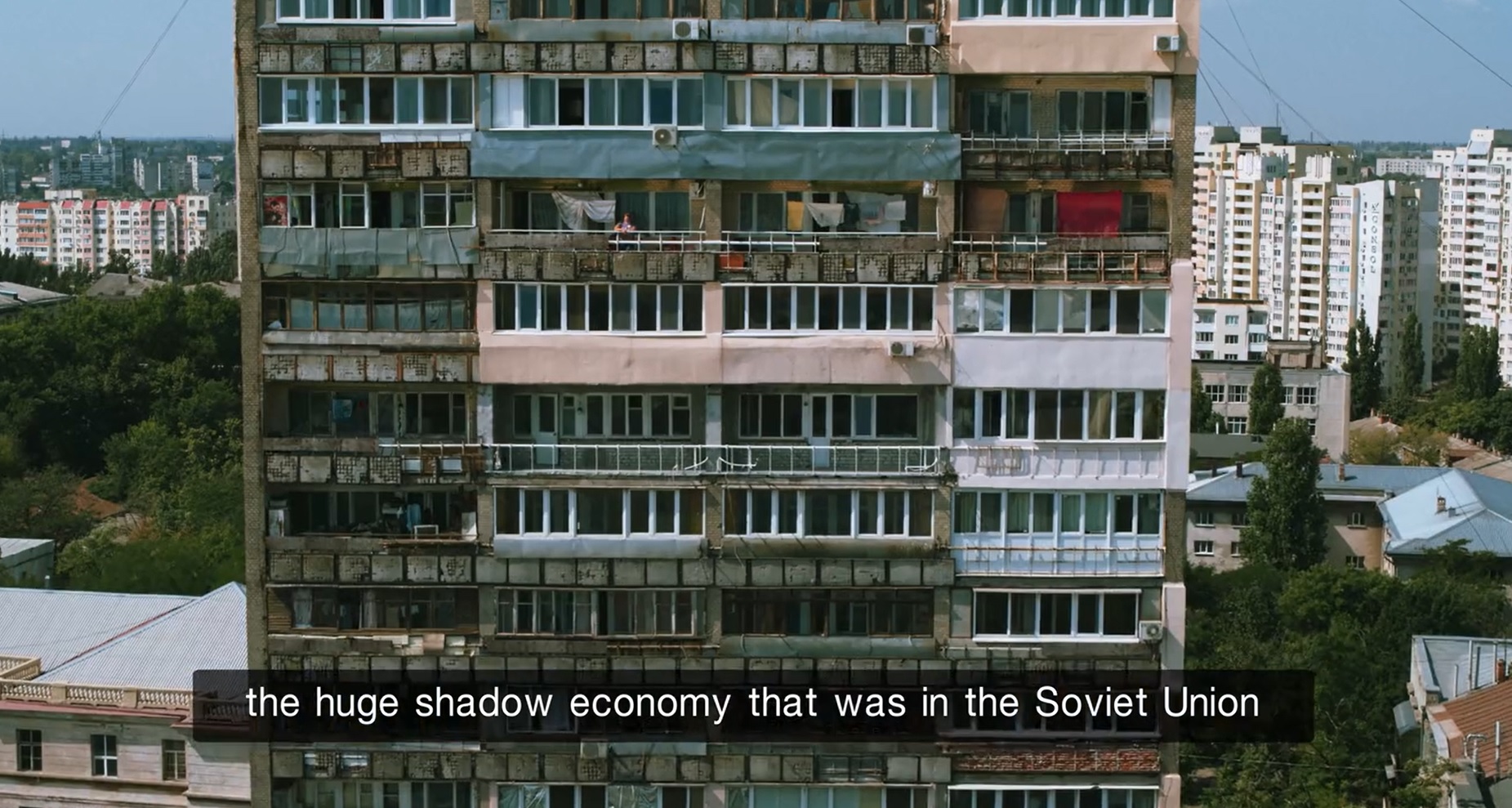The space around us forms our ways of thinking, our behavior, and to some extent defines our lives. On the other hand, it’s we who form this space around us, adjusting it to our habits, traditions, and worldview. Enter through the Balcony is a Ukrainian documentary by Roman Blazhan exploring the phenomenon of the balconies Ukrainians inherited as a legacy of Soviet housing development. It appears that the way people arrange their balconies can tell us a lot about history, current culture, and the way how people organize their lives.
“Our film is an ode to love for Ukraine and its people. And balconies can say much more about us and our time than we can," the director Roman Blazhan says.The iconic Soviet movie Irony of Fate, or Enjoy Your Bath! released in 1976, depicts the story of a Moscow man who, in a drunken stupor, flies to Saint Petersburg by mistake. In Saint Petersburg, he takes a taxi to the exact street and building number of his apartment in Moscow -- where he discovers a building and an apartment identical to his Moscow residence. The plausibility of this story was clear to all living in the Soviet Union: planned housing developments throughout the country ensured that all buildings constructed during this time were virtually identical -- from the deserts of Uzbekistan to the streets of Kyiv. In today’s world, however, the plot of Irony of Fate, or Enjoy Your Bath! seems far less believable. Since the movie’s release, much has changed with these grey buildings. To a large extent, this change has been caused by a transformation of the balconies. These centrally-planned Soviet housing developments served an important purpose: small apartments allocated at no cost to citizens solved the housing shortages that plagued many Soviet cities. The identical construction of these buildings allowed for maximum efficiency in production and also served to limit manifestations of individual identity -- in the Soviet Union everyone, and their homes, had to be identical. Identity, however, began to push through the sameness, much like a flower in spring. This new sense of identity manifested in many areas of life, including balconies. In the documentary, Blazhan explores the varied uses of these balconies as home cafés, stores, pantries, meeting rooms, etc. In particular, as many people were forcibly relocated from their villages to the big cities, they brought their unique home identities to their balconies, which often resemble the balcony of a khata, a traditional village house. In the film, Kyiv architect Oleksandr Burlaka explains that many citizens constructed their first balconies themselves -- even though this type of entrepreneurship was strictly forbidden in the Soviet Union.
“All of these Soviet balconies were a sort of demonstration of the huge shadow economy that existed in the Soviet Union,” the architect says.In fact, Dmytro Volik, Head Architect of the city Dnipro, recounts that in the 1970’s architects in Dnipro deliberately designed balconies in such a fashion that they could not be glazed. The residents, of course, found ways to overcome this obstacle. These balconies are unattractive from the outside -- there is plastic lining, wooden planks, and trash all visible from the street -- yet each balcony looks unique.

Takflix: a platform where you can finally watch Ukrainian films online

